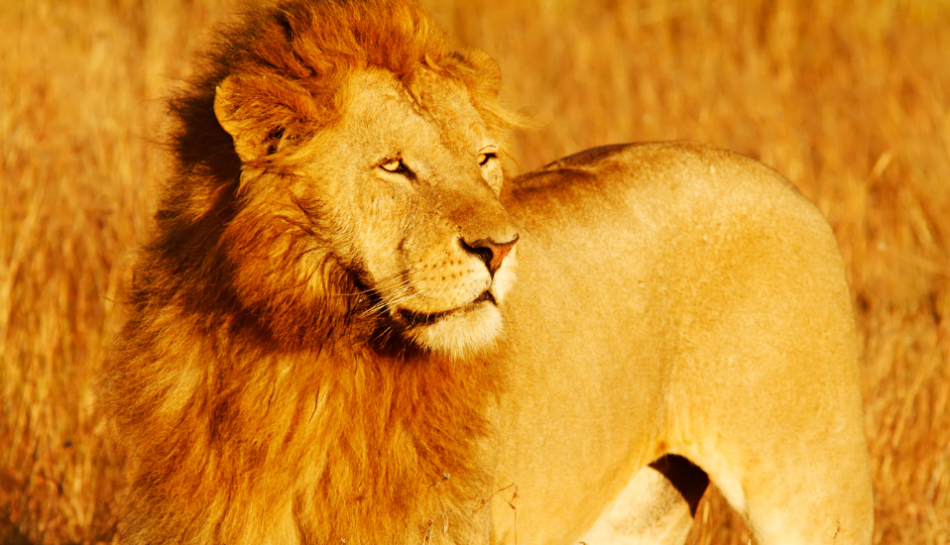Kenya's Big Five: Where and How to See Them on Safari
If you’ve ever dreamed of encountering the majestic Big Five—lion, leopard, elephant, buffalo, and rhino—there’s no better place to tick off this ultimate safari bucket list than Kenya. This guide will take you on a thrilling journey across Kenya’s most iconic landscapes, revealing the best places to spot these incredible animals and offering tips to make your safari experience unforgettable. So, grab your binoculars and prepare for the adventure of a lifetime!
1. The Big Five: An Introduction
Before diving into where to find Kenya’s Big Five, let’s take a moment to understand why these animals have earned their esteemed place. The term "Big Five" was originally coined by big-game hunters to describe the five most challenging animals to hunt on foot. Today, however, it represents a quintessential safari experience, where wildlife enthusiasts seek to observe these iconic species in their natural habitat.
-
Lion: Known as the "King of the Jungle," lions are powerful and social predators that roam the savannahs in prides. They are often found resting under acacia trees or engaging in communal activities.
-
Leopard: Solitary and elusive, leopards are masterful hunters that are known for their ability to stealthily stalk prey. They are often seen resting on tree branches or hiding in dense foliage.
-
Elephant: The largest land animals on Earth, elephants are known for their intelligence and complex social structures. They are often found in large herds, feeding on grasses, leaves, and fruits.
-
Buffalo: African buffaloes are formidable and unpredictable, with a reputation for being one of the most dangerous animals on the continent. They are usually seen in large herds grazing on the plains.
-
Rhinoceros: With their distinctive horns and thick skin, rhinos are among the most endangered of the Big Five. They are generally found in reserves where conservation efforts are in place to protect them.
2. Where to See the Big Five: Kenya’s Top Safari Destinations
Kenya’s diverse ecosystems provide the perfect backdrop for seeing the Big Five. Each park and reserve offers unique opportunities for wildlife viewing. Here’s a rundown of the best places to spot each member of the Big Five:
Masai Mara National Reserve
Overview: The Masai Mara is Kenya’s most famous safari destination, renowned for its abundant wildlife and the annual Great Migration. It’s an exceptional place to see all members of the Big Five, thanks to its vast open plains and rich biodiversity.
Best Spots:
- Lions: Lions are often seen lounging in the tall grass or under acacia trees. The Mara River area is a great place to spot prides, especially during the Great Migration.
- Leopards: Leopards are more elusive, but sightings are common in the Mara Triangle, particularly in the dense tree cover. Look for them resting on tree branches.
- Elephants: Large herds of elephants are frequently seen throughout the reserve, particularly near the Mara River and in the forested areas.
- Buffalo: Buffaloes are commonly found in large herds on the Mara plains and near water sources.
- Rhinoceros: Rhinos are rare but can sometimes be spotted in the Mara North Conservancy. For a higher chance of seeing black rhinos, consider visiting the nearby Nairobi National Park.
Amboseli National Park
Overview: Located in southern Kenya, Amboseli is famous for its stunning views of Mount Kilimanjaro and its large elephant herds. The park’s wetlands and savannahs provide ideal habitats for the Big Five.
Best Spots:
- Lions: Lions are often seen near the park’s swamps and open grasslands. Look for them lounging under the shade of acacia trees.
- Leopards: Leopards are less common but can be spotted in the park’s more wooded areas, such as the Observation Hill region.
- Elephants: Amboseli is renowned for its large elephant herds, which can be seen throughout the park, especially near the swamps and water sources.
- Buffalo: Buffaloes are less common but can be found in smaller herds in the park’s southern areas.
- Rhinoceros: Rhinos are rare in Amboseli, but some can be seen in the park’s western regions or in nearby sanctuaries.
Tsavo National Parks
Overview: Comprising Tsavo East and Tsavo West, this massive park is known for its diverse landscapes, from volcanic hills to dense bushlands. It’s one of the best places to see the Big Five in a more remote setting.
Best Spots:
- Lions: Tsavo’s lions are famous for their distinctively large size and dark manes. They can be spotted throughout the park, particularly around waterholes.
- Leopards: Leopards are elusive but can be found in the park’s forested and rocky areas, such as the Mzima Springs region in Tsavo West.
- Elephants: Tsavo is home to large herds of elephants, particularly in Tsavo East. The park is known for its “red elephants” that are covered in the red dust from the park’s soil.
- Buffalo: Buffaloes are commonly seen in both Tsavo East and Tsavo West, often in large herds near water sources.
- Rhinoceros: Black rhinos are protected in a sanctuary within Tsavo West. This area offers a better chance of seeing these elusive animals.
Laikipia Plateau
Overview: The Laikipia Plateau is a private conservancy area offering an exclusive safari experience. Its diverse landscapes and conservation efforts provide excellent opportunities to see the Big Five.
Best Spots:
- Lions: Lions are frequently seen in the conservancies, especially in the areas with open grasslands and waterholes.
- Leopards: Leopards are more commonly spotted in the more remote and wooded parts of the conservancies.
- Elephants: Large herds of elephants are often seen in the conservancy’s varied landscapes, including forested areas and open plains.
- Buffalo: Buffaloes can be found in herds across the conservancies, particularly near water sources.
- Rhinoceros: The Ol Pejeta Conservancy is known for its rhino sanctuary, where both black and white rhinos can be seen.
3. How to Maximize Your Chances of Seeing the Big Five
Spotting the Big Five requires a combination of the right timing, knowledgeable guides, and a bit of luck. Here are some tips to enhance your chances:
1. Choose the Right Time: As mentioned earlier, the dry season (June to October) is the best time for wildlife viewing, as animals congregate around water sources and vegetation is less dense. The Great Migration period (July to September) in the Masai Mara is particularly spectacular.
2. Hire Experienced Guides: Local guides have an intimate knowledge of the animals' behavior and habitats. They can track animal movements and increase your chances of sightings. Make sure your safari operator employs skilled guides with a good reputation.
3. Be Patient and Persistent: Wildlife sightings can sometimes require patience. Be prepared for early mornings and late evenings, as these are the prime times for animal activity. Listen to your guide’s advice and stay alert during game drives.
4. Use Quality Binoculars and Cameras: High-quality binoculars will enhance your viewing experience, especially for spotting elusive animals like leopards. A good camera with a zoom lens is essential for capturing those once-in-a-lifetime moments.
5. Respect Wildlife: Always follow your guide’s instructions and maintain a respectful distance from animals. Avoid making loud noises or sudden movements that could disturb them. This approach not only ensures your safety but also respects the wildlife’s natural behavior.
4. Sample Safari Itinerary: A Journey to See the Big Five
Here’s a sample itinerary to help you plan your Big Five safari adventure:
Day 1: Arrival in Nairobi
- Arrive at Jomo Kenyatta International Airport and transfer to your Nairobi accommodation. Take the day to relax and prepare for your safari adventure.
Day 2-4: Masai Mara National Reserve
- Fly or drive to the Masai Mara. Spend the next three days on exciting game drives to spot the Big Five. Consider a hot air balloon ride for a unique view of the landscape.
Day 5-6: Amboseli National Park
- Fly or drive to Amboseli. Explore the park’s diverse landscapes, focusing on sightings of elephants, lions, and other wildlife. Visit local Maasai villages if time permits.
Day 7-8: Tsavo National Parks
- Travel to Tsavo East or Tsavo West for a different safari experience. Enjoy game drives in search of the Big Five, and visit the Mzima Springs or the rhino sanctuary.
Day 9-10: Laikipia Plateau
- Head to the Laikipia Plateau for a more exclusive safari experience. Enjoy game drives, walking safaris, and opportunities to see rhinos up close in the Ol Pejeta Conservancy.
Day 11: Return to Nairobi
- Return to Nairobi for your departure. Reflect on your incredible safari adventure and perhaps explore any final sights or shop for souvenirs.



